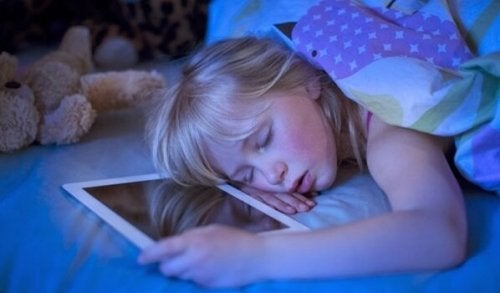Technological insomnia is increasingly conquering night spaces in a world populated by screens, the technology and blue light so characteristic of these devices completely alter our sleep cycles and our biological clock, far from being punctual, we are facing a new high-impact disorder that is beginning to be very common in children and adolescents.
Most of us do. You go to bed and it’s almost inevitable not to take one last look at the phone. We read the messages and one of them takes us to a link, to a video. Immediately after this video, we entered our social network and social network. for one article and then for another video, so, and almost without realizing it, it may have lasted an hour, maybe longer.
- Mobile devices.
- As well as computers and televisions.
- Are a way of having fun before going to sleep.
- We think that this way we relax much more.
- But in reality the impact of these screens on our brain is enormous.
Combining insomnia with this common behavior can be a bit complicated. Can my night break really be damaged if I stay on my phone or computer for a while?The answer is simple: yes. Repeated behavior day after day becomes a habit, when this habit is also based on the application of artificial light sources in our eyes, the one that really suffers is our brain.
According to a study published in LiveScience, this type of light stimulation completely alters our circadian rhythms, in addition, it has been proven that we are currently sleeping 2 hours less than 40 years ago, so the population that suffers the most from these changes is that of children and adolescents, all this not only results in the increasingly early onset of chronic insomnia , but its effects on behaviour, motivation and academic performance are also appreciated.
Before humans made the leap into the world of technology, were our bodies in sync with sunrise and sunset, have these centuries been when we illuminated our environments with candles, chandeliers, fireplaces, oil or gas lamps?At the time, there was something our brains certainly appreciated very much.
Living according to the cycles of light and darkness satisfies you, so when our retinas detected that the night was already falling, the pineal gland was normally stimulated to produce melatonin, a hormone that also remained in our bloodstream much longer, allowing us to sleep better. and for more hours.
Now, after a few years, our cities have suddenly become incredibly bright, the night is another dawn of neon lights, LED lamps, torch-lit buildings and streets that refuse to sleep, our houses also show the same luminous vitality until the early hours. morning. The world of screens on our mobile devices are now our lamps and chains?be always connected, informed, and over-stimulated.
Sleep hygiene experts are clear: technological insomnia will increase dramatically in the coming decades. Children, for example, have access earlier and earlier to these devices; and it’s very common to go to bed without family supervision.
To say now that the solution is to remove tablets, mobile phones and computers would certainly be limiting. We need awareness, better habits and other resources. For example, the technology industry is increasingly striving to reduce the impact of blue light on our eyes and therefore it would be a matter of reaching consensus to combine health habits with a technical evolution of the devices themselves.
But let’s see how we can reduce the impact of technological insomnia on our daily lives.
In conclusion, we point out something no less important, let us not forget the importance of sleep hygiene in both children and adults, ideally we would put aside all kinds of technologies two hours before bedtime, sometimes a good book, a cup of warm milk with honey, a good conversation, are the favorite resources to fall asleep , with which you gain in well-being and deep sleep.

